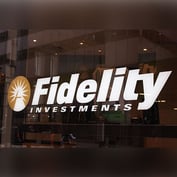Nov. 1, 2004 — Despite worldwide challenges, U.S. stock fund returns are holding up well this year as investors appear to be making the best of the situation by focusing on reasonably priced stocks, particularly mid and small caps.
Through October, domestic equity funds have risen 2.62%, according to preliminary data from Standard & Poor’s. Small-cap value funds have had the strongest performance among domestic equity fund categories, gaining 7.9% so far this year.
Looking past the difficulties, investors are seeing some positive signs, such as attractive valuations in certain market segments, and the Federal Reserve’s “good job of telegraphing their interest-rate policy,” said Sam Stovall, chief investment strategist at Standard & Poor’s. A pull back in oil prices has also led to market gains in recent weeks.
History is also on the side of the current bull market, Stovall noted. Out of the 11 second-year bull markets since 1942, the S&P 500 has risen all 11 times, according to Stovall. The second year of the current bull market ended on October 8, 2004, posting a below-average increase of 8%.
The market’s modest gain this time may, paradoxically, bode well for next year. Of the 10 third-year bull markets since 1942, three of the four that were preceded by single-digit second year advances posted double-digit gains in the subsequent year, Stovall noted.
Guarded Outlook for 2005
“We think the bull market is intact, and we expect the S&P 500 to advance in the mid to high single digits in 2005,” said S&P’s Stovall. Standard & Poor’s investment policy committee projects the S&P 500 will close at 1150 at year-end 2004, 1200 at mid-year 2005, and 1220 at year-end 2005. The index closed at 1129.79 last Friday.
David Lettenberger, manager of First American Mid Cap Growth Opport/A (FRSLX), thinks investors shouldn’t expect a “huge” market in 2005, and that 5% to 10% gains are likely. He expects that high energy prices will limit consumer spending, which will slow economic growth.
“Consensus expectations are for slower growth next year, not a grinding halt,” said Bill D’Alonzo, manager of Brandywine Blue Fund (BLUEX). Alonzo said it is “pretty clear” that the market hasn’t kept pace with earnings growth so far this year. Classified as a large-cap blend fund by Standard & Poor’s, Brandywine Blue has risen 7.2% this year through last month.
Earnings growth is beginning to slow, according to David Scott, co-manager of Chase Growth Fund (CHASX). Going forward, he predicts “modest gains as the most likely scenario.” A large-cap growth offering, Chase Growth rose 8.9% this year through Friday.








 November 02, 2004 at 07:00 PM
November 02, 2004 at 07:00 PM










